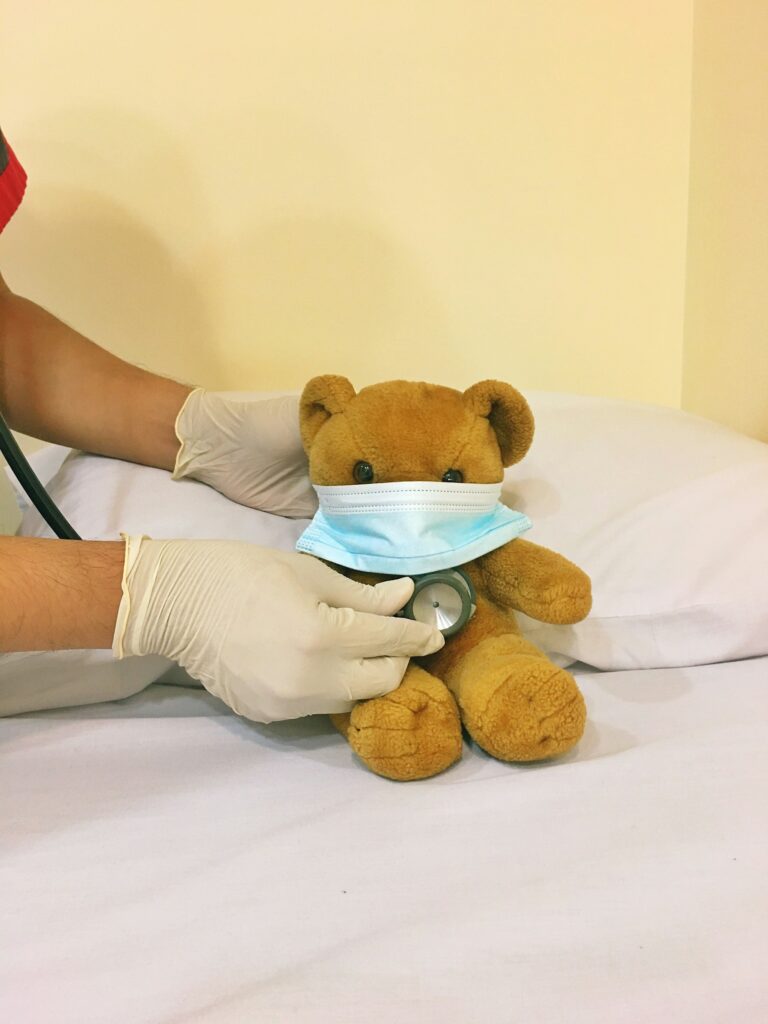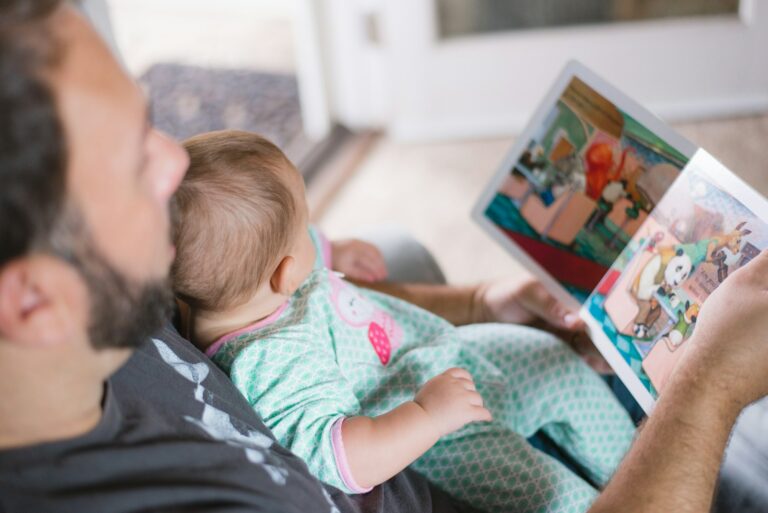Every parent, at some point, faces those days when everything seems upside down—when a child’s tantrum erupts at the market, thunder rattles windows, or unplanned emergencies flip routines on their heads. In such moments, the word crisis management may sound like jargon reserved for corporations or the evening news, but, in reality, it finds its truest meaning at home. How do families bounce back, maintain trust, and provide a sense of safety when stormy emotions, unexpected illnesses, or even power cuts disrupt daily life? What can parents actually do—not tomorrow, but right now—to nurture their children’s mental, physical, and emotional well-being in the unpredictable world around them? Here, you’ll find practical solutions woven with compassion, science-backed strategies, and a steady reminder that preparedness isn’t about fear—it’s about empowerment. Together, embrace new tools, clear roles, and adaptive communication styles that help anchor families through anything from meltdowns to natural disasters, pushing past shame and judgement toward growth and recovery.
Why crisis management matters for families
How often have you felt a sudden chill in your heart when a child’s shriek pierces a quiet night or a WhatsApp alert brings worrying news? Family emergencies, health scares, digital mishaps, or even ordinary outbursts can spark anxiety—not just for kids, but for parents navigating a swirl of expectations and conflicting advice. Crisis management, in this context, isn’t just a checklist or a formal drill. It’s a living, breathing approach rooted in anticipation and gentle communication—a mindset that says, “No matter what happens, we’re prepared to steady the ship, hand-in-hand.”
Medical research tells us that children’s emotional storms often stem from biological and developmental immaturity; their brains struggle with impulse control, emotional self-regulation, and verbalizing needs. Parental anxiety is further heightened by social scrutiny—well-meant neighbours, relatives, and even passersby, each with their own flood of opinions. At these crossroads, crisis management thrives on practical routines: rehearsed emergency plans, updates kept handy, open channels of communication—each a thread weaving stronger family resilience, even when plans unravel and flexibility becomes the only option.
Understanding crisis management: At home and beyond
What is crisis management?
Imagine crisis management as both an umbrella and a safety net: it incorporates the anticipation, detection, and rapid response to those moments where everyday life teeters on the edge—whether due to a collective disaster or a personal crisis within the family. The aim? To minimize negative impact and reestablish routines as swiftly as possible.
Risk management versus crisis management
Ever wondered where risk management stops and crisis management begins? Risk management plays defence: childproofing outlets, renewing health insurance, staying updated with weather forecasts. Crisis management, in contrast, leaps into action when things go awry—when first aid must be given, a child cannot calm down, or a power outage leaves everyone in the dark. These two work best hand-in-hand, creating a cocoon where both prevention and action have a place.
Family-specific challenges: Indian context
Factors unique to Indian families—such as multilingual communication, community density, regional disparities in medical infrastructure, and frequent climate events—can complicate both communication and coordinated action. Consider urban areas where neighbours are a call away, versus rural zones coping with less rapid medical response. Crisis management adapts to these nuances, blending collective effort and individual resourcefulness.
Types of crises families may encounter
- Emotional and behavioural: Tantrums, refusals, overwhelming anger—often misread as mischief, but deeply tied to unmet needs or neurological immaturity. Have you noticed how tiredness or hunger can turn even the calmest child into a “storm”?
- Environmental and health emergencies: Cyclones, heatwaves, pandemic outbreaks—each brings their own cascade of physical and emotional aftershocks. Young children may not vocalise fear but may show it through regression or sleep changes.
- Technological, financial, social mishaps: Sudden loss of internet, job instability, negative online rumours—events that affect emotional stability and family unity.
- New-age threats: Community friction, digital privacy violations, rapid climate changes—dynamic risks requiring agile, up-to-date crisis management strategies.
First line of defence: Strategies for managing emotional family crises
Rethink the tantrum
A foot stomping, tear-streaming child is not just “acting out.” Neurologically, impulse control—mediated by the prefrontal cortex—develops slowly. Interpreting “I won’t” as “I can’t right now” revolutionises your approach: Sometimes demands are simply beyond a child’s current capacity.
Win their attention the gentle way
Raise your voice? Usually backfires. Instead, come down to your child’s level, offer a light touch, maintain eye contact. Suddenly, you’re co-navigators in the storm, not adversaries. If you explain with clarity—“We cannot bite, but you can ask for help if someone takes your toy”—new cooperation is possible.
Offer alternatives, not just “No”
How often do children hear only prohibitions, but rarely an option? Instead of listing don’ts, try “When you feel angry, you can squeeze your hands or call Amma”—empowering, not just restricting.
Prefer natural consequences to strict punishment
Repeated time-outs or punishments may suppress behaviour but rarely build understanding. Instead, encourage small repairs or apology gestures. Repairing a hurt or spilled cup teaches responsibility, not resentment.
Model emotional self-regulation
Mirror neurons mean your calm is contagious—even more than your words. During any crisis, a parent’s regulated tone teaches far more than lectures. Calm, steady respiration or a brief guided breathing can shorten meltdown duration and reduce everyone’s stress hormone (cortisol) load.
Transform “time-out” into mindful pause
Time-out shouldn’t mean isolation. Instead, press pause together—leave the scene calmly, breathe, return once both hearts have slowed. This signals boundaries without shame.
Simplify: One clear adult voice
Conflicting instructions multiply confusion. When many adults intervene at once, distress deepens. Instead, agreement on “one speaks, others back up” reassures children and accelerates recovery.
Care for yourself
Has frustration ever left you on edge, ready to snap? Tag out if possible, trade roles, or simply take a breath and step back for a moment. Parental self-care is central for effective crisis management.
Recovery time: reconnect
After turbulence, don’t rush to explanations. Start with a hug, a snack, some quiet play. Only then discuss what happened, explore together what could be done differently.
Affirm trust and patience
Skills for self-control and responsible choice-making emerge with repetition, not instant obedience. Express faith in your child’s growing abilities. Over time, their “I can’t” turns into confident “I’ll try.”
Essential crisis management plan: Combining science, logistics, and empathy
A thorough family crisis management plan braids together emotional literacy, pragmatic steps, and clear role allocation. Begin with anticipatory communication: Who calls whom? Where are first aid supplies? Who keeps medical records and emergency contacts? Regular “drills,” even playful simulations, help embed routines in memory, shrinking panic when real events hit.
Include:
- Communication trees (who is in charge of relaying information)
- Up-to-date medical, allergy, and contact info
- Roles like “medical support,” “communication lead,” “safety checker”
- Backups for essential utilities (water, flashlight, power bank)
- Age-appropriate tasks for each child (knowing emergency numbers, carrying ID)
Practise and revisit your plans as children grow, family needs shift, or as new technology arrives (wearables, apps, group SMS alerts).
Role assignment: Family crisis management team
Every family needs a clear (but flexible) assignment: one leads, others follow. Someone tracks supplies, another manages outside communication. Privacy, dignity, and calm should remain centre-stage, even under scrutiny. If overwhelmed by external press attention, rely on one trusted person to handle calls, safeguarding children’s emotional security.
When legal or medical advice is warranted—chronic illness flare-up, safety-related accident—consult trusted professionals or helplines promptly. Children can and should participate within their abilities; practice makes swift action almost automatic.
The cycle of crisis management: From first warning to recovery
Start with early recognition: Watch for warning signals—breaking news on phones, sudden silence from a usually lively child, a creeping sense of stress between parents. Reactivate communication plans, review who does what, and ensure the youngest and most vulnerable are prioritised for protection and comfort.
During the event:
- Attend first to immediate safety and emotional distress.
- Maintain basic routines: meals, medication, bedtime—familiarity soothes nerves.
- Engage support networks: friends, neighbours, community groups, or digital groups if physical support is unavailable.
- After calm resumes, address emotional fallout directly. Short, honest conversations relink security; gentle return to favorite routines builds trust back, bit by bit.
- Review, update, and improve plans regularly. If something didn’t work, rework the plan without reproach or panic.
Communication: The lifeline during crises
Imagine trying to give instructions to a frightened child while loud voices overlap and alarms buzz—chaos multiplies. Clear, compassionate communication is the anchor. Whether explaining cyclone safety, a medical symptom, or why a parent needs to leave briefly, use direct, kind language, tailored for each individual.
Choose reliable methods: face-to-face, phone (keep numbers printed and digital), trusted neighbourhood contacts, or government apps. Social media spreads information fast, but always cross-check before acting—rumours can undermine safety.
Embracing innovation: Technology and community strength
Wearable gadgets, GPS trackers for kids, environment sensors, and instant alert systems—tech is rapidly transforming crisis management. Standardise family plans with group apps; automate supply checks; monitor health via digital platforms, all while staying privacy-conscious.
Don’t underestimate the power of community: local NGOs, housing society committees, and regional disaster response teams can extend your safety net. Many Indian families benefit from involvement in school awareness drives and state-led drills, which foster resilience and readiness in even the youngest members.
Common pitfalls: Learning from slips and stumbles
What holds families back from effective crisis management? Sometimes, it’s outdated information or skipped practice runs. Elsewhere, role confusion or hesitation delays response. Emotional exhaustion, supply shortages, or language barriers may stump even well-prepared households. But every event offers a chance to reflect, adapt, and build greater resilience. Honest conversations, open feedback, and regular updates create a foundation that children learn to trust.
Measuring and boosting family crisis management readiness
Wondering how “ready” your family really is? Try tracking:
- Time to respond to an alert or incident
- How well each member remembers their role
- Clarity and speed of communication
- Safety and health outcomes post-crisis
- Emotional bounce-back—how quickly tension fades
- Frequency and quality of practice drills
Store critical personal and medical data safely but accessibly (physical and digital). Prioritise vulnerable members; always have up-to-date contacts, medications, and a go-bag stocked. Adjust whenever family needs or environments shift—resilience is never a finished product.
Real-world stories: Lessons in action
Consider the COVID-19 pandemic—families who built clear communication routines, with support from local trusted voices, coped not just physically but emotionally. Or those who cared for chronically ill children: digital health records, regular check-ins with doctors via apps, and pre-packed supply kits kept hospital visits smoother and less fraught with worry.
Others found that cultures of secrecy or shame blocked timely response—bolder conversations, even uncomfortable, broke the cycle and allowed for timely help. After all, clarity and compassion during adversity, shared openly, can be the bridge to true resilience—no matter if the emergency is personal or public.
Key Takeaways
- Crisis management is much more than planning for rare disasters—it shapes the everyday security and emotional health of families.
- Preparation, grounded in both science and empathy, shrinks panic and builds trust.
- Assigning roles, practicing routines, and educating children create predictability and comfort, even in chaos.
- Integrating technology and communication—within the family and with the wider community—allows rapid, coordinated responses.
- There are always resources and professionals ready to guide parents—lean on them whenever needed.
- For individually tailored advice and access to free child health questionnaires, download the application Heloa and take your first step towards empowered family health management.
Questions Parents Ask
What is the difference between crisis management and disaster management?
Many wonder if both terms mean the same thing. Crisis management is a practical process families use to face sudden challenges—like a personal emergency, blackout, or emotional meltdown—focusing on quick adaptation and recovery using existing resources and communication channels. Disaster management is wider, usually activated for major events—floods, earthquakes, pandemics—led by authorities and involving large-scale evacuation, aid distribution, and community response. While disaster management relies on formal frameworks and authority coordination, crisis management at home is deeply personal, driven by routines, family communication, and emotional support. Both benefit immensely from regular preparation.
What are the main steps to develop a crisis management plan at home?
Building family crisis management begins with identifying what can go wrong—think health scares, natural disasters, digital issues. Write down the likeliest scenarios. Then, allocate roles: even young children remember safe meeting spots or can carry emergency contacts. Store all vital data (medical details, contacts) both digitally and on paper. Practice: do run-throughs for fire drills, review supplies together. Adjust the plan with each family change—new school, new house, medical updates. This process is less about “perfect preparedness” and more about everyone knowing how to act effectively during chaos.
What is the role of communication in crisis management?
Communication—simple, repetitive, honest—sits at the very heart of crisis management. During a crisis, everyone needs clear instructions, not vague advice. Children, especially, need repeated reassurance and explanations in language matched to their age and temperament. Always clarify doubts, encourage questions, and double-check understanding. Remind children frequently that feeling scared is normal, and offer comfort through words and action. Lean on reliable sources for alerts, and filter disturbing content—especially on digital devices—for younger family members. Ultimately, open communication strengthens family bonds, builds resilience, and provides a robust anchor when the unexpected happens.









